Spine
Lumbar Microdisectomy
Lumbar micro discectomy is a surgery to treat a damaged disc in the lower back. Discs are oval-shaped layers of connective tissue (cartilage) between the bones in the spinal column (vertebrae). Disc prevents the vertebrae from rubbing together. A disc can tear and bulge outward (become herniated). This puts pressure on nerves that are near the spine and may cause pain, numbness, weakness, or other symptoms. You may need this surgery if your symptoms are severe, get worse, or have not been helped by other treatments. In this procedure, the part of the disk that is causing problems is removed through minimally open incisions on your lower back.
Laminectomy
Laminectomy is a surgery to remove:
- Lamina. These are small flat pieces of bone in the spine.
- Ligaments. These strong tissues connect bones to each other underneath the lamina. The ligaments connect vertebrae, which are the bones in the spine.
- Facet joints. These are the connections between the bones of the spine.
The surgery is done to reduce pressure on nerves and the spinal cord, and to lessen pain, numbness, and discomfort. You may need this procedure if you have narrowing of the spinal canal (spinal stenosis) or if you have a spinal tumour or spinal injury.
Laminectomy enlarges the spinal canal to relieve pressure on the spinal cord or nerves. Laminectomy of the vertebrae in neck region is called as Cervical Laminectomy Laminectomy of the vertebra in lower back region is called as Lumbar laminectomy.
Lumbar Decompression
Lumbar decompression is an operation to relieve the pressure on the nerves in your lower back. The pressure is caused by natural ‘wear and tear’ changes in the discs, ligaments and facet joints. The medical term for the disease is Lumbar canal Stenosis, meaning the narrowing of the spinal canal space for the nerves in your lumbar spine.
The pressure on the nerves in your back causes you pain in your lower back, buttocks and legs. In some patients, it can also cause numbness and weakness in legs and disturbance to bladder or bowel function.
Decompression surgery is successful in relieving symptoms of lumbar spinal stenosis.
Lumbar Fusion
Lumbar fusion is the surgery in which one or more vertebrae in the lumbar region are stabilized and joined together. The surgery may need to be performed for patients suffering from spondylolisthesis, lumbar canal stenosis, scoliosis, herniated disc, traumatic instability in the lower back. It is also recommended for people suffering from leg or back pain caused by Degenerative Disc Disease.
Spinal fusion eliminates movement between vertebrae. It also prevents the stretching of nerves in the fused zone. Most spinal fusions involve only single or two segments of the spine and do not limit flexibility of your lower back very much.
There are many approaches to perform a lumbar fusion surgery.
- Anterior Lumbar Interbody Fusion
- Posterolateral Lumbar fusion
- Posterior Lumbar Interbody Fusion
- Transforaminal Lumbar Interbody Fusion
- Lateral Lumbar Interbody Fusion
Cervical Decompression
Cervical myelopathy is the conditions caused by compression of the spinal cord in the neck region (cervical spine). Cervical radiculopathy is caused by compression of the nerve roots exiting the cervical spine. These result in weakness and numbness of the arms and legs, pain or tingling sensations that travel down one or both arms, difficulty with walking, and bowel and bladder dysfunction.
Patients who develop progressive loss of strength and muscle function as a result of cervical stenosis need surgical cervical decompression. The primary goal of cervical decompression is to prevent further progression of weakness.
Posterior Decompression: The affected area of the cervical spine is approached from the back of the neck and the lamina removed through a laminectomy, which decompresses the spinal cord. A fusion is done next using rods with screws along with bone grafting.
Anterior decompression: The affected area is approached from the front of the neck. The herniated disc with or without the body of vertebra (corpectomy) is removed in order to relieved the pressure over spinal cord and nerve roots. Bone graft is used to bridge the gap created along the spine and fixed using metal plate and screws.
Cervical Fusion
Cervical fusion is a procedure that is done on bones in the neck to relieve pressure on the spinal cord or on one or more nerve roots.
There are two types of cervical fusion:
Posterior cervical fusion: This surgery is done through the back of the neck. The goal of this procedure is to join two or more of the bones in the spine (vertebrae). This procedure is most commonly used to treat cervical spine fractures and dislocations and to fix deformities in the neck.
Anterior cervical fusion: This surgery is done through the front of the neck. This procedure is most commonly used to treat a herniated cervical disk, degenerative cervical disease, and arthritis in the cervical spine. The affected disk and bone spurs will be removed (decompression).
The area where the disk was removed will then be filled with bone graft or bone implants or both.
Screws and rods or metal plates may be used to stabilize the vertebrae while they fuse.
Spinal Fractures Fixation
Spinal fractures anywhere along the spine mostly result from serious injuries like high-energy trauma and require emergency treatment. Other fractures can be the result of a lower-impact event, such as a minor fall, in an older person whose bones are weakened by osteoporosis. Minor fractures of the spine can be managed with rest and medication. Whereas more severe fractures might require surgery to realign the bones. If left untreated, spinal fractures can lead to permanent spinal cord injury, nerve damage and paralysis.
Bracing: Recommended for those with stable spine fractures. A back brace holds the fractured spine in alignment and help your broken vertebrae heal properly. Most people need to wear a brace for a few months.
Surgery:It is indicated when there is significant instability of the spine or if there is compression of the spinal cord. Surgical fixation involves instrumentation and fusion. Metal hardware such as plates, rods, hooks, screws, and cages are used to achieve stabilisation of the fractured bones while union happens. Rehabilitation with supervised physiotherapy is required following surgery.
Deformity correction
- Scoliosis is the abnormal curvature of the spine in sideways.
- Kyphosis is the abnormal curvature of the spine in forward direction.
- Treatment is based on the severity and progression of the deformity.
- Milder forms of deformity are managed with special spinal braces, along with exercises to improve the flexibility and strength of the spinal musculature.
- Surgery is recommended for those with neurological involvement (weakness, numbness, bowel and bladder dysfunction), worsening of the degree of deformity, unstable deformities.
Fusion with spinal instrumentation from the backside of the spine (posterior) is the most common procedure for the correction of scoliosis. Metal rods are anchored to the vertebra with pedicle screws and hooks in order to straighten and hold the spine in place. For severe deformities, a cut is made in the bone (Osteotomy), in order to realign the spine into a more normal orientation.
Anterior Spinal fusions are usually reserved for more severe cases and are most commonly done along with a posterior operation.
Spinal Injections
Spinal injections are recommended in some patients with neck and back problems, not improving with oral medications and physiotherapy. They are given under radiographic guidance.
Types of Spinal Injection
- Epidural Injection: It is given in those patients with nerve compression or inflammation, which results in radiating pain along the upper limb or lower limb (sciatica). A combination of anaesthetic and anti-inflammatory medication is injected around the affected nerve in the epidural space.
- Facet joint injection: Facet joint are the small joints connecting two adjacent vertebra on the backside of the spine. Arthritis in these joint can cause persistent back pain. Injections into the facet joint blocks the sensory nerves supplying them and can provide pain relief for months.

Dr. Manuj Wadhwa
Chairman & Executive Director- Elite Institutes of Orthopedics & Joint Replacement
- Ojas Hospitals, Panchkula
- Ivy Hospitals, Punjab
Awards Wining Doctor
- 2 Times World Book of Records
- 7 Times Limca Book of Records
Let’s Get In Touch

Sector 22, Panchkula
09:00 am - 04:00 pm
(By Prior Appointments)

Sector 71, Mohali
09:00 am - 04:00 pm
(By Prior Appointments)
Email us
Give us a Call
Book An Appointment








